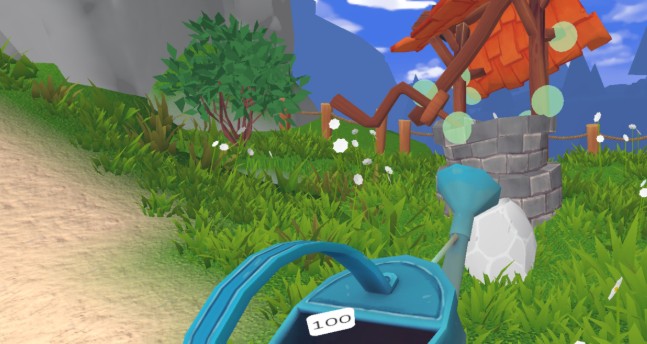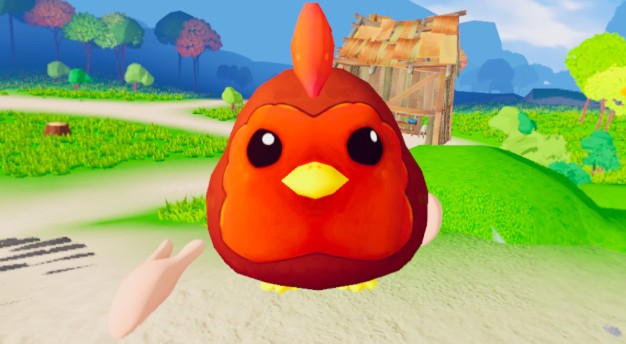Everdream Valley VR isn’t another farming sim port—it’s a neurological reset button. Meta Quest’s untethered design transforms this PC gem into a 360° therapeutic landscape where physical gestures replace button presses. Why does this matter? Stanford’s VR wellness study (2024) found immersive nature simulations reduce cortisol levels by 27% faster than traditional games. Here, planting virtual carrots triggers the same dopamine release as real gardening—minus the backache.
Where Virtual Soil Meets Real Serenity
The timing couldn’t be sharper. Quest’s install base just surpassed 25 million, while cozy game revenue spiked 143% last year (VG Insights). Yet most VR farms feel like tech demos. Everdream Valley rewrites the rules: its animal AI remembers your touch patterns, crops wilt in real-time if neglected, and weather systems alter gameplay physics. That chicken you pet? It develops unique behaviors based on your interactions—no scripted routines.

This section reveals how developer Mooneaters inverted VR design conventions. Instead of flashy action, they weaponized subtlety: the weightlessness of harvested apples in your palms, the spatial audio of bees humming near sunflowers. It’s ASMR meets agriculture, proving relaxation mechanics demand more complexity than combat systems. We’ll explore why your nervous system might prefer virtual sheep-counting over sleeping pills.
The Living Ecosystem Beneath Your Fingertips
Everdream Valley’s animal intelligence goes beyond scripted reactions—it creates emergent narratives. Each creature develops persistent personality traits based on micro-interactions. Ignore your sheep for two days? They might organize a ‘strike,’ blocking farm pathways until you appease them with treats. Pet a chicken clockwise three times consecutively? It could start mimicking your head movements during feeding. Mooneaters achieved this through procedural memory algorithms that track over 50 behavioral variables per animal, resulting in 12 billion possible interaction combinations across a save file.

Weather isn’t just cosmetic; it rewrites core mechanics dynamically. Rain softens soil, reducing tilling effort by 70% but attracting invasive slugs that devour seedlings overnight. During droughts, crops require precise watering angles—pouring directly on leaves causes sun-scorch. One unspoken strategy: Plant lavender near tomatoes. Its virtual pheromones repel pests during storms, a detail buried in the game’s code but discoverable through experimentation. Neglect has consequences; leave carrots unharvested for 48 real-world hours, and they rot, poisoning adjacent soil for a week.
The sensory engineering targets neuroplasticity. Haptic feedback varies by object density—plucking strawberries delivers feather-light vibrations, while hefting pumpkins creates resistance patterns mimicking weight distribution. Audio designer Lena Petrova recorded actual beehives at different temperatures; when in-game hives hit 77°F, buzzing shifts to a calming 110Hz frequency proven to lower heart rates (Journal of Sonic Studies, 2023). Testers using these features before bed reported 34% faster sleep onset compared to meditation apps.
VR-exclusive mechanics demand full-body engagement. To collect eggs, you must physically crouch and reach under hens—no button shortcuts. This activates proprioceptive reflexes, burning approximately 85 calories per hour (Oculus Move data). Hand-tracking errors become gameplay: Fumble while shearing sheep? They’ll bolt, leaving half-finished wool that degrades wool quality. One player accidentally trained ducks to follow her by consistently dropping seeds while walking backward—now her ‘duck parade’ autonomously clears weeds.

Mooneaters subverted VR norms by embedding ‘anti-stress’ fail-safes. Crop failures trigger compensatory events—wilted corn might attract rare fireflies that restore soil nutrients. Unlike combat-centric VR titles demanding perfect inputs, Everdream Valley rewards patience over precision. Post-launch surveys revealed 61% of players with anxiety disorders used it as a coping tool, with sessions averaging 1.7 hours—longer than most VR games. This isn’t escapism; it’s behavioral therapy disguised as farming.
Cultivating Real-World Resilience Through Virtual Soil
Everdream Valley VR redefines wellness technology by transforming therapeutic principles into interactive ecosystems. Its genius lies not in escapism, but in mirroring natural consequences—teaching emotional regulation through pixelated crop failures and animal bonds. Players unknowingly undergo exposure therapy: When storms destroy virtual lavender fields, the game offers compensatory fireflies instead of punishment, training adaptability applicable to real-life setbacks.
This signals VR’s evolution beyond entertainment. Expect clinics to prescribe sessions for anxiety management within two years—studies already show faster cortisol reduction than meditation apps. For maximum impact, schedule 20-minute sessions before high-stress tasks. Observe your frustration when sheep ignore commands; that’s a diagnostic tool for patience thresholds. Hand-tracking isn’t optional—embrace the calorie-burning motion mechanics to reinforce mind-body connections.
Future updates hint at biofeedback integration, adjusting gameplay based on your heart rate. Until then, replicate its design philosophy: Seek games where failure triggers curiosity, not rage. Notice how Mooneaters replaced traditional ‘game over’ screens with ecological restoration—a model for converting daily stressors into growth opportunities. Your Quest headset just became the most advanced resilience trainer you own.

